[Emblem of Taormina]
[Emblem of Sicily]
TAUROMENION Tauromenion sopravvive all’Antichità con lo stesso nome e nello stesso luogo; ciò determina la distruzione di larga parte dell’antico tessuto urbano e molto contribuisce alla sua particolarissima identità di città siciliana. L’antica città occupava i declivi del monte Tauro verso l’ampia baia di Naxos, la prima colonia greca di Sicilia, cui in maniera programmatica si sostituisce nel corso del IV secolo a.C. Le notizie sulla sua doppia fondazione ben testimoniano la volontà di porre la città in diretto rapporto di discendenza con l’antica colonia, malgrado il nome di origine sicula. Le coniazioni della città caratterizzate dall’immagine di Apollo Archegetes confermano tale programma. Nel 358 a.C. Andromaco, padre dello storico Timeo, raccoglie i superstiti di Naxos e i loro discendenti (Diod. XVI 6,7) e fonda la nuova città, di fatto ellenizzando quella in precedenza (396 a.C.) fondata dai Siculi con l’aiuto di Imilcone (Diod. XIV 59,2). Ritrovamenti nell’area dell’agorà segnalerebbero l’esistenza di un abitato greco già a partire dal VI secolo a.C.
[Images]
Le cosiddette Naumachie (Il secolo d.C.)
The so called "Naumachie" (2 century AD)
Veduta di Taormina
View of Taormina
I Siculi hanno abitato le atture del Tauro (Diod. XIV 88,1). Le tombe della necropoli di Cocolonazzo con corredi comprendenti vasi ad impasto e vasi tardo-geometrici euboici evidenziano i precoci rapporti tra Siculi e coloni. Dopo la fondazione del 358 a.C., Andromaco partecipa alla guerra contro i Cartaginesi a fianco di Timoleonte. Con Agatocle la città perde di importanza, assoggettata da Siracusa: nel 312 a.C. il tiranno siracusano esilierà Timeo, suo inconciliabile avversario politico. All’inizio del III secolo a.C. riacquista l’indipendenza con il tiranno Tyndarion, che nel 278 a.C. aiuta Pirro ad impadronirsi di Siracusa (Diod. XXII 2,1; 7,4: 8,3). Tale indipendenza ebbe breve vita: nel 270 a.C., durante la guerra tra Siracusa e i Mamertini, Taormina è annoverata tra i domini di Siracusa (Diod. XXII 13,2), e così successivamente nel trattato del 263 a.C. tra lerone Il e i Romani. Con questi ultimi la città abilmente intrattenne buoni rapporti, riuscendo ad evitare, durante la guerra punica, di ricevere una guarnigione romana e di partecipare alla guerra con proprie truppe. La fedeltà a Roma le garantisce lo status di alleata del popolo romano, per questo esentata dalle più gravose contribuzioni, quali la fornitura di navi da guerra (Cicerone, Verr. II, 4,50). Nella prima guerra servile è una delle principali roccaforti degli schiavi ribelli, con difficoltà riconquistata dal console Rupilio nel 132 a.C. Diventa con Cesare municipio latino come molte altre città siciliane. Si schiera con Sesto Pompeo nella guerra che oppone questi ad Ottaviano (Appiano, Bellum civile, V. 449-65). Questa alleanza costa a Taormina la brutale espulsione degli abitanti e la deduzione da parte di Augusto, probabilmente nel 21 a.C., della colonia popolata con veterani prevalentemente di origine italica (Diod. XVI 7,1). Conosciamo poco della storia successiva: la cittă continuò a godere di una certa prosperità, in parte dovuta alla produzione di vini rinomati (Plinio, Nat. Hist., XVI, 26 e 66) e all’esportazione di marmi colorati e di legno, come già documentato nella tarda età ellenistica dalle iscrizioni con i rendiconti finanziari. I resti dell’edilizia pubblica e privata documentano un forte sviluppo e un notevole livello di benessere nei secoli II e III d.C. Dopo la conquista di Siracusa da parte degli Arabi, Taormina fu considerata la capitale della Sicilia bizantina: capitolerà solo nel 902 dopo aver resistito a lungo.
[Image]
Veduta.del Teatro di Taormina
View of the Theatre of Taormina
Regione Sicilia/beniculturali
[Map of the city with important points indicated]
1. TEATRO ANTICO / 2. GINNASIO / 3. NAUMACHIA / 4. MOSAICO SALITA SANTIPPO / 5. AGORA-FORO / 6. ODEON E TEMPIO / 7.
MOSAICO PRESSO HOTEL LA CAMPANELLA / 8. TERME DI ETÀ IMPERIALE ROMANA / 9. "TERME BIZANTINE" / 10. TEMPIO DI ISIDE E SERAPIDE / 11. DOMUS DI VILLA S.PANCRAZIO
1. ANCIENT THEATRE / 2. GYMNASIUM / 3. NAUMACHIA / 4. MOSAIC OF SALITA SANTIPPO / 5. AGORA-FORUM / 6. ODEON AND TEMPLE / 7. MOSAIC AT THE HOTEL LA CAMPANELLA / 8. ROMAN IMPERIAL THERMAE / 9. "BYSANTINE THERMAE" / 10. TEMPLE OF ISIS AND SERAPIS / 11. DOMUS OF VILLA S.PANCRAZIO
HISTORY Tauromenion survived Antiquity with the same name and in the same site. The fact that the modern town of Taormina was built directly over it meant, however, that a large part of the ancient urban fabric was destroyed and contributed much to its very particular identity. The ancient city occupied the lower slopes of Monte Tauro towards the bay of Naxos, the first Greek colony in Sicily. After the destruction of Naxos in 403 BC, Tauromenion replaced it in the 4th century BC. Reports of its dual foundation clearly highlight its direct descent from the earlier Greek colony. This is also confirmed by the city’s coins characterized by the image of Apollo Archegetes. In 358 BC Andromachos, father of the historian Timaeus, gathered the survivors of Naxos and their descendents (Diod. XVI 6,7) and founded the new city, de facto Hellenizing the town that had previously been founded (in 396 BC) by the Sikels with Carthaginian assistence (Diod. XIV 59.2). Finds in the agora area would seem to confirm the existence of a Greek settlement as early as the 6th century BC. The Sikels had inhabited the heights of Monte Tauro (Diod. XIV 88.1). The tombs of the Cocolonazzo burial site point out early relations between native Sikels and Greek colonists, through grave goods comprising indigenous impasto pots and Late-Geometric Euboean vases. After the foundation of Tauromenion in 358 BC. Andromachos supported the expedition of Timoleon. Under Agathocles the city lost its importance, subjected by Syracuse: in 312 BC the Syracusan tyrant exiled Timaeus. In the early 3rd century BC it regained its independence with the tyrant Tyndarion, who in 278 BC helped Pyrrhus to gain control of Syracuse (Diod. XXII 2.1: 7,4: 8.3). This independence, however, was short-lived: in 270 BC. during the war between Syracuse and the Mamertines, Tauromenion was among the towns under Syracusan rule (Diod. XXII 13.2), as it also was in the treaty between Hieron II and the Romans in 263 BC. With the Romans the city forged and maintained good relations. If thus succeeded in avoiding occupation by a Roman garrison during the Second Punic War and in participating in the war with its own troops. Fidelity to Rome ensured its status as an ally of the Roman people; as such it enjoyed the privileges of an allied city and was exempted from the more onerous contributions (Cicero, Verr. II. 4,50). In the first Servile War, however, it was one of the main strongholds of the rebel slaves, and only with difficulty was it re-conquered by the consul Publius Rupiljus in 132 BC. Having become a Latin municipium under Caesar it sided with Sextus Pompeius in his war against Octavian (Appian, Bellum civile V. 449-65). The price paid by Tauromenión for this alliance was steep the brutal expulsion of its inhabitants and the foundation of a Roman colony by Augustus, probably in 21-B. (Diod. XVI 7.1). We know little about its subsequent history: the city continued to enjoy some prosperity in part due to the production of the wines for which it was famous in Antiquity (Pliny, Nat. Hist. XVI, 26 and 66) and to the export of marble and timber, as already documented in the late Hellenistic period by inscriptions with financial accounts. The remains of public and private buildings testify to strong development and a considerable level of prosperity in the 2nd and 3rd centuries AD. After the conquest of Syracuse by the Arabs. Taormina was considered the capital of Byzantine Sicily, not until 902 would it fall after prolonged resistance.
[Images]
Odeion (Il secolo d.C.)
Odeion (2nd century AD)
Ambienti riscaldati (calidaria) delle Terme del Foro (Il secolo d.C.)
Warmed rooms (calidaria) of the Forum Baths (2nd century AD)
Comune di Taormina
QR code
Comune di Taormina
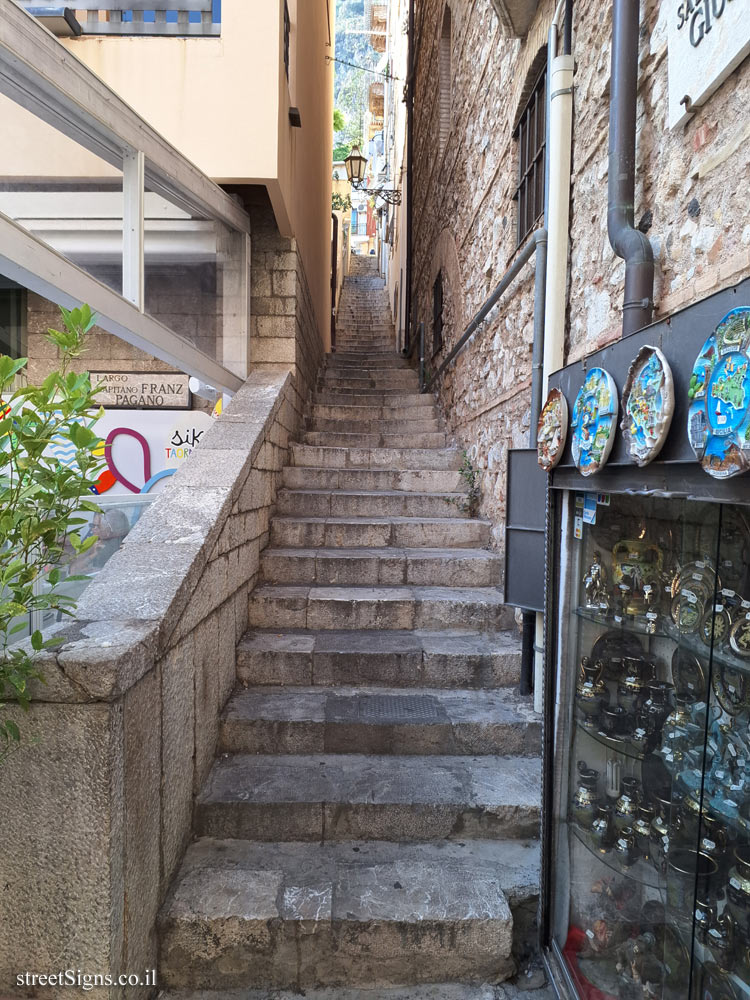 Click for a larger image
Click for a larger image 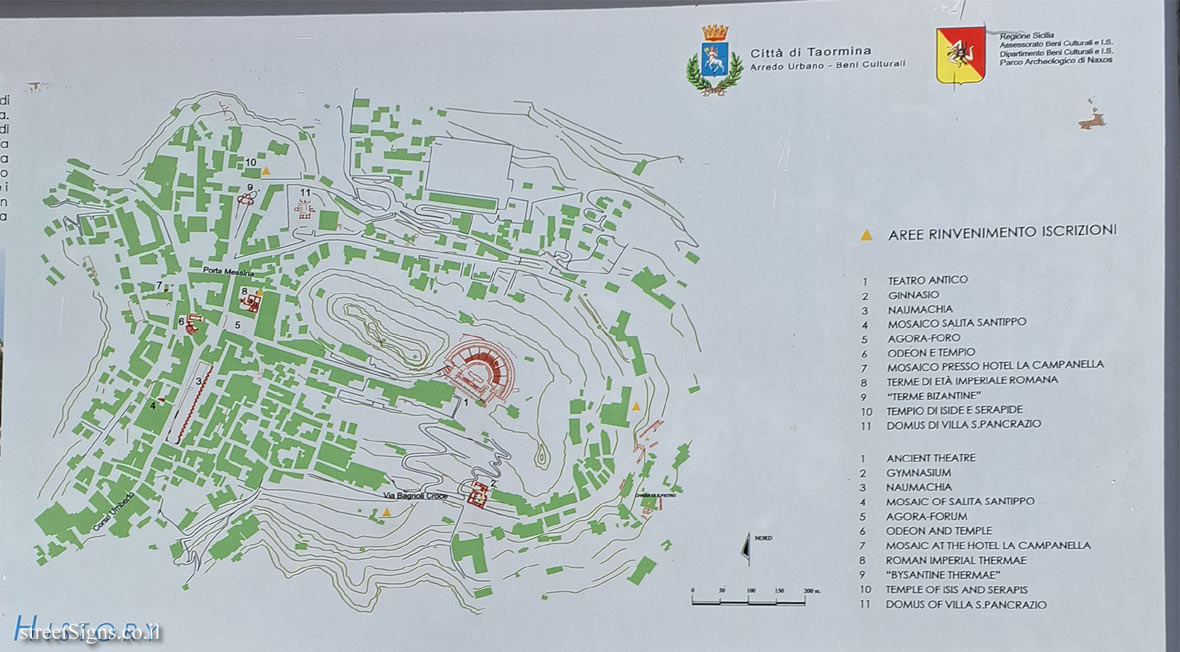 Click for a larger image
Click for a larger image 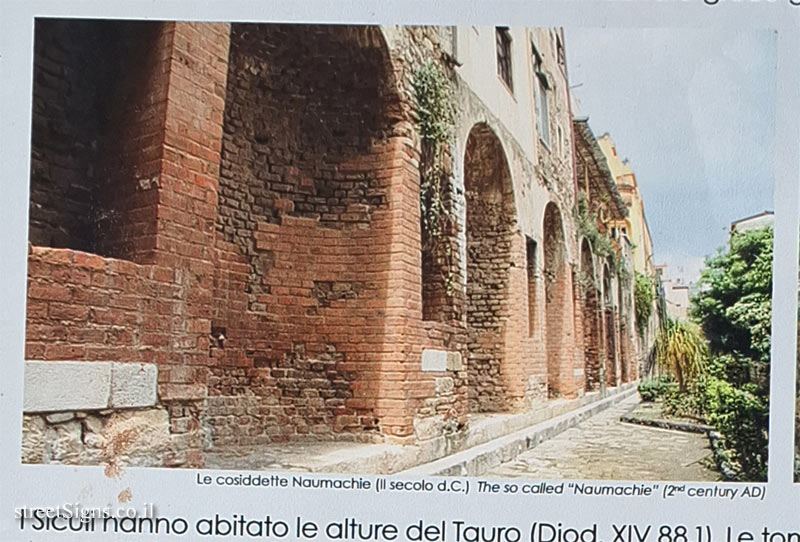 Click for a larger image
Click for a larger image 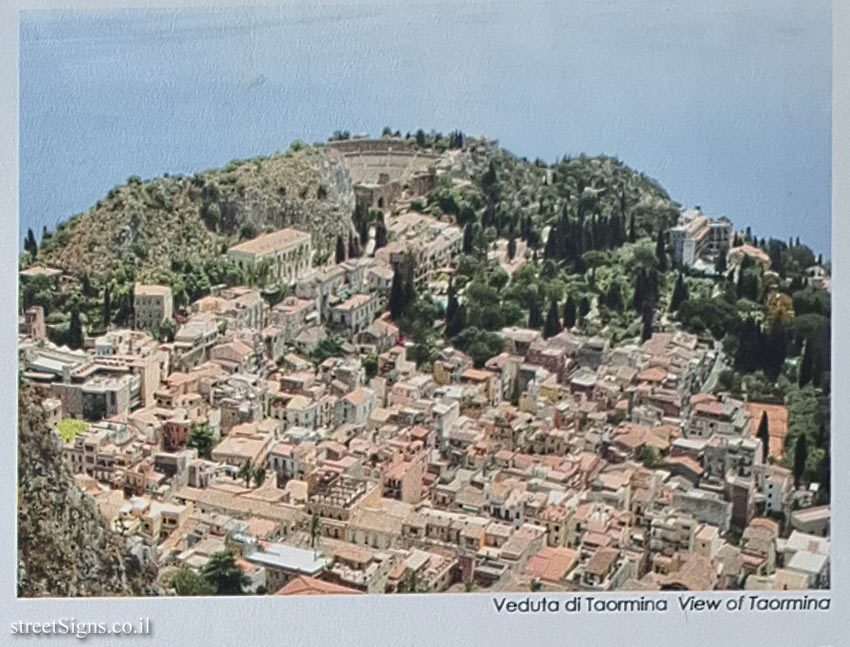 Click for a larger image
Click for a larger image 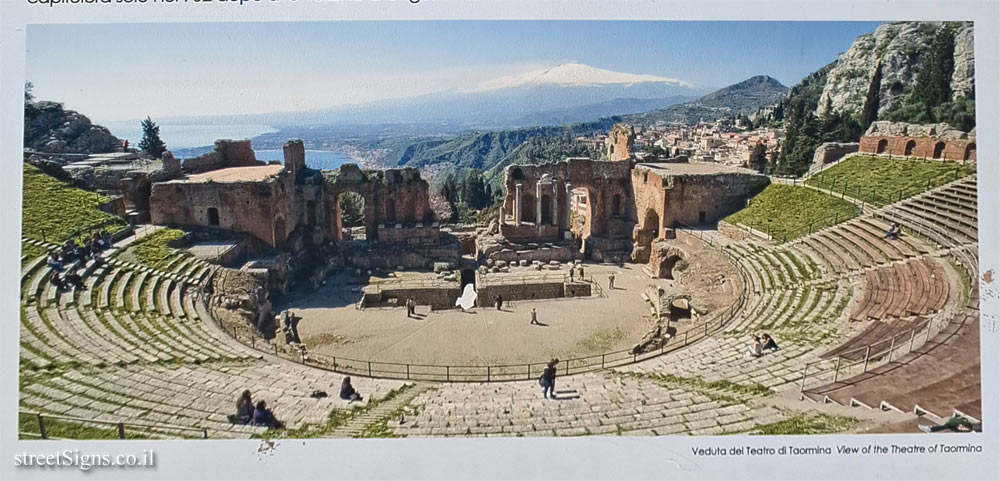 Click for a larger image
Click for a larger image 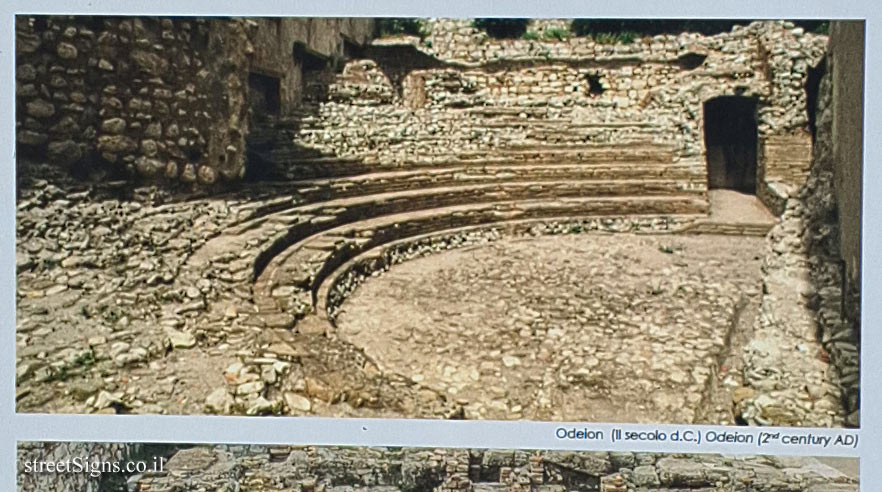 Click for a larger image
Click for a larger image 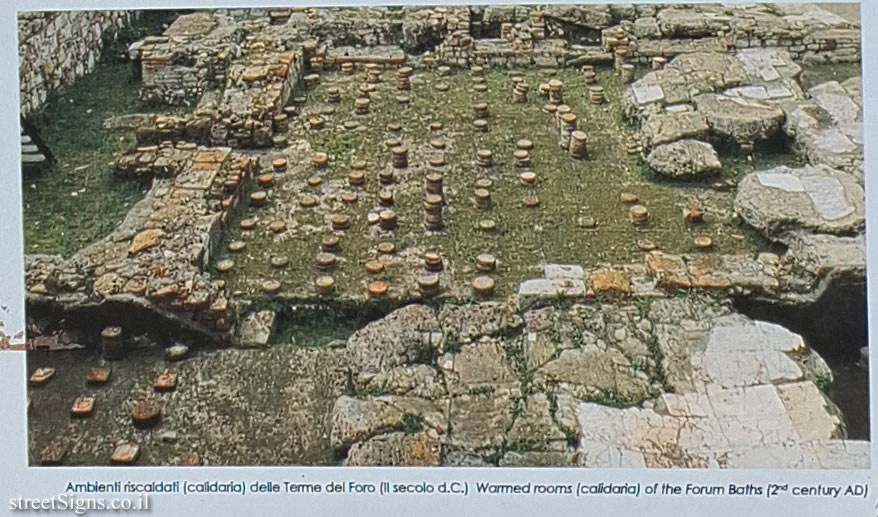 Click for a larger image
Click for a larger image